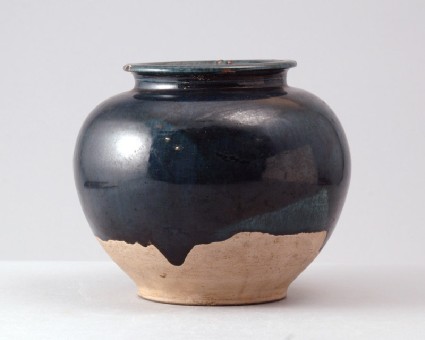Browse: 127 objects
Jar with blue glaze
- loan
-
Details
- Associated place
-
Asia › China › Henan province (Gongxian kiln-sites) (place of creation)
- Date
-
8th century AD (AD 701 - 800)
Tang Dynasty (AD 618 - 907)
- Material and technique
- earthenware, thrown, with cobalt-blue glaze; unglazed base; glazed rim; yellow glaze inside
- Dimensions
-
14.5 cm (height)
16.6 cm (diameter)
at base 9 cm (diameter)
- Material index
- Technique index
- Object type index
-
container › vessel › pot › burial-pot,
- No. of items
- 1
- Credit line
- Lent by the Sir Alan Barlow Collection Trust.
- Accession no.
- LI1301.261
-
Further reading
University of Sussex, and Arts and Humanities Research Council, The Barlow Collection, supervised by Regina Krahl, Maurice Howard, and Aiden Leeves (Sussex: University of Sussex, 2006), no. C253
Glossary (2)
earthenware, glaze
-
earthenware
Ceramic material made of clay which is fired to a temperature of c.1000-1200⁰c. The resulting ceramic is non-vitreous and varies in colour from dark red to yellow.
-
glaze
Vitreous coating applied to the surface of a ceramic to make it impermeable or for decorative effect.
Location
-
- currently in research collection
Objects are sometimes moved to a different location. Our object location data is usually updated on a monthly basis. Contact the Jameel Study Centre if you are planning to visit the museum to see a particular object on display, or would like to arrange an appointment to see an object in our reserve collections.
Publications online
-

The Barlow Collection
This blue glaze, derived from imported cobalt, was the most prestigious and expensive glaze colour for burial wares in the Tang dynasty (AD 618–907). It was used for only a short time, mainly in the second half of the eighth century AD.
The jar is well potted, with widely bulging, rounded sides, tapering and slightly flaring again towards the flat base, and the short wide neck curving outward. The beige-coloured pottery body is covered with a cobalt-blue glaze, applied in undulating layers which form an attractive pattern in different shades of blue, adhering in a very dark layer at the shoulder. The blue glaze also covers the neck inside but leaves the lowest part and base free, while the inside is glazed in a pale yellow. The rim shows three bar-shaped radiating spur marks, where a cover had been fired in place.
© 2013 University of Oxford - Ashmolean Museum




